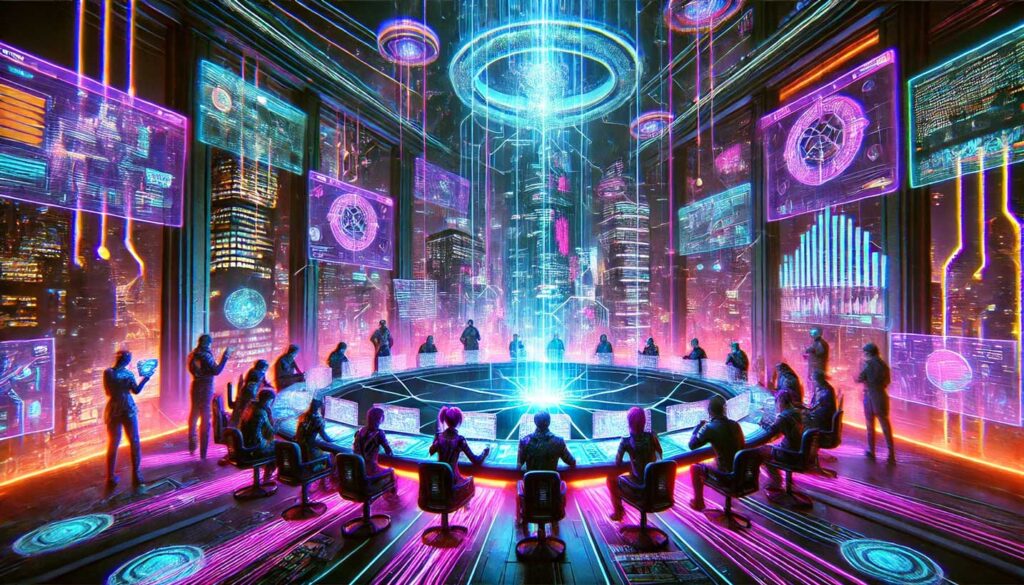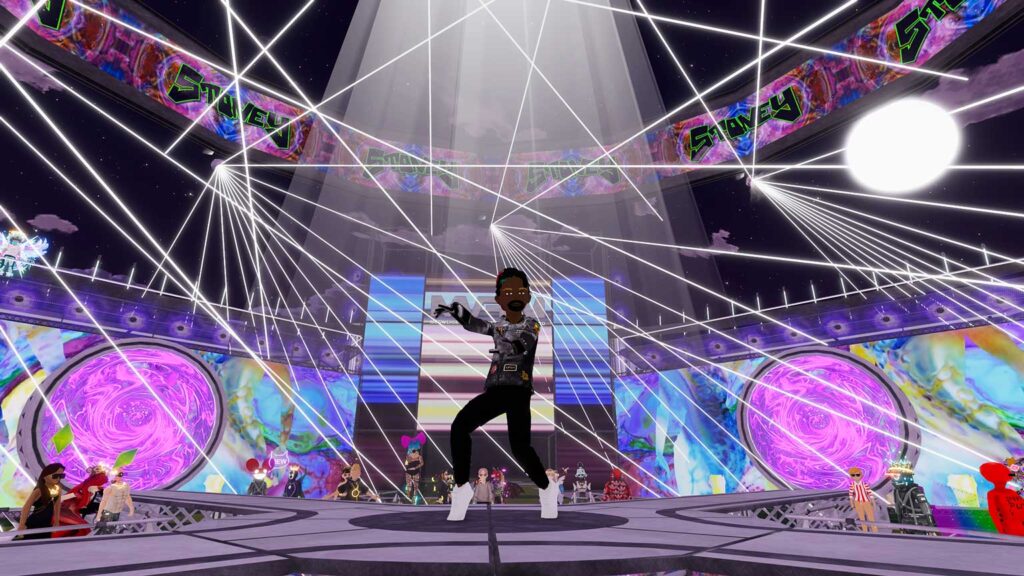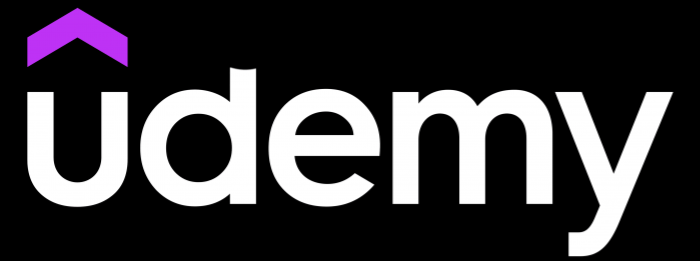Ultimate Guide to Metaverses 2025
Table of Contents
Introduction to Metaverses
What is a Metaverse?
A metaverse is a collective virtual shared space created by the convergence of virtually enhanced physical reality and digitally constructed virtual worlds. Often described as the next evolution of the internet, the metaverse integrates 3D environments, augmented reality (AR), virtual reality (VR), and blockchain technology to create immersive and interactive experiences. Users can socialize, work, learn, and play in these interconnected digital spaces, often represented by customizable avatars. Think of it as a digital universe where the real and virtual seamlessly blend together.
Why Are Metaverses Important?
Metaverses are rapidly transforming how we interact with technology, people, and even businesses. Here are some key reasons why they are important:
Revolutionizing Social Interactions: The metaverse allows for deeper connections through immersive experiences, making virtual gatherings feel more personal and engaging.
Driving Innovation Across Industries: From gaming and entertainment to education and healthcare, the metaverse offers a platform for innovation and creativity that transcends physical limitations.
Creating New Economies: Entire economies are forming within the metaverse, enabling users to earn income through play-to-earn games, virtual real estate, and the sale of digital goods and NFTs.
Empowering Remote Collaboration: Virtual workspaces and meeting environments provide businesses with new ways to collaborate across distances, making remote work more interactive and productive.
Fostering Inclusivity and Accessibility: Metaverses have the potential to create inclusive spaces where physical, geographic, and economic barriers are minimized, giving more people access to education, work opportunities, and social connections.
How Does It Work?
Metaverses are built using advanced technologies such as:
Blockchain: Ensures ownership of digital assets and enables secure transactions.
AR/VR: Creates immersive environments for users to interact in.
Artificial Intelligence (AI): Powers lifelike avatars, NPCs (non-player characters), and dynamic virtual environments.
Cloud Computing: Provides the infrastructure to handle the vast data and computational needs of metaverse platforms.
3D Design and Modeling: Shapes the visually rich environments that make the metaverse engaging.
Who Is Building the Metaverse?
Leading tech companies, blockchain startups, and independent creators are actively contributing to the metaverse ecosystem. Key players include:
Meta (formerly Facebook): Building Horizon Worlds and VR hardware like Oculus.
Microsoft: Developing enterprise-focused metaverse solutions like Mesh.
Epic Games: Leveraging Fortnite as a foundation for immersive, large-scale virtual experiences.
Decentralized Platforms: Decentraland, The Sandbox, and others are leading in blockchain-based metaverses.
By understanding what the metaverse is and why it matters, users can start exploring its opportunities and prepare for the transformative changes it promises to bring to our digital and physical lives.
How to Access the Metaverse
Getting Started
Accessing the metaverse is easier than it might seem, though the level of immersion you experience depends on the technology you use. Here’s how you can begin:
- Choose a Device: Most metaverse platforms are accessible through a variety of devices, including:
- PCs or Laptops: Ideal for exploring browser-based or desktop metaverse platforms.
- VR Headsets: Devices like Oculus Quest 2, HTC Vive, or PlayStation VR offer the most immersive experiences.
- Mobile Devices: Many metaverse apps, such as Roblox or Zepeto, are optimized for smartphones and tablets.
Create an Account: Sign up on the platform of your choice (e.g., Decentraland, The Sandbox, or Horizon Worlds). You’ll often need to create a profile and design your avatar.
Set Up a Digital Wallet (Optional): For blockchain-based metaverses, setting up a digital wallet (like MetaMask) is essential for buying, selling, or owning digital assets.
Popular Platforms to Explore
Roblox: A user-friendly platform with games, social events, and creation tools.
Decentraland: A blockchain-based metaverse where users can buy virtual land and interact in 3D spaces.
The Sandbox: Known for its voxel-style graphics, it allows users to create, buy, and sell assets.
VRChat: A social-focused platform that emphasizes user-created virtual environments.
Horizon Worlds: Meta’s flagship VR-based metaverse for collaboration and socializing.
Tips for a Smooth Start
Test Your Equipment: Ensure your devices meet the technical requirements of the platform you’re accessing.
Start with Free Experiences: Explore free-to-access areas or games to familiarize yourself with the metaverse before making any purchases.
Engage with Communities: Join forums, Discord channels, or in-platform communities to learn tips and connect with other users.
By following these steps, you’ll be well on your way to navigating and enjoying the metaverse. As you explore, remember that each platform offers unique experiences, so don’t hesitate to try out different ones to find the best fit for your interests.
Exploring Popular Metaverses
Overview of Top Metaverse Platforms
The metaverse landscape is vast and diverse, with platforms catering to a variety of interests, from gaming and socializing to virtual commerce and education. Here are some of the most popular metaverse platforms:
Comparing Platforms
Here’s a quick comparison of these platforms to help you decide which one suits your interests:
| Platform | Focus Area | Best For | Unique Feature |
|---|---|---|---|
| Decentraland | Real Estate, Events | Crypto enthusiasts | Blockchain-based economy |
| The Sandbox | Creation, Gaming | NFT collectors | Voxel-style experiences |
| Roblox | Gaming, Social | Families and gamers | User-friendly creation tools |
| VRChat | Social, Role-play | Social enthusiasts | Immersive interactions |
| Horizon Worlds | Collaboration, VR | VR users | Meta VR integration |
Tips for Choosing a Platform
Identify Your Goals: Are you looking to socialize, play games, create content, or invest in virtual assets?
Consider Accessibility: Choose a platform that aligns with your available devices (PC, VR headset, mobile).
Engage with the Community: Research the user base and events offered by each platform to find the best fit.
Exploring these platforms is a great way to experience the diversity of the metaverse and discover what aligns with your interests and goals.
Tokenization and Decentralized Governance

Tokenization in Metaverses
Tokenization is the process of converting real-world or digital assets into blockchain-based tokens that can be bought, sold, or traded within a metaverse ecosystem. These tokens often represent:
Digital Land and Real Estate: Users can own and trade virtual plots of land as NFTs.
In-Game Items: Skins, accessories, and tools are tokenized for ownership and resale.
Platform Currencies: Many metaverse platforms have native tokens (e.g., MANA for Decentraland, SAND for The Sandbox) that act as the primary currency for transactions.
Benefits of Tokenization
Ownership and Control: Tokenization ensures that users truly own their assets, which can be transferred or sold without intermediaries.
Interoperability: Blockchain-based tokens can often be used across multiple platforms, depending on the ecosystem.
Monetization Opportunities: Users can earn by creating, trading, or investing in tokenized assets.
Decentralized Governance
Decentralized governance enables users to have a say in how metaverse platforms evolve. This is typically done through:
Decentralized Autonomous Organizations (DAOs): Platforms like Decentraland and The Sandbox allow token holders to vote on decisions, such as platform updates, new features, or funding allocations.
Voting Mechanisms: Token holders can propose and vote on changes, ensuring a democratic and community-driven approach.
Key Platforms Utilizing Tokenization and Governance
Decentraland: Users can vote on policies and initiatives through its DAO using MANA tokens.
The Sandbox: LAND and SAND token holders participate in decisions about platform features and partnerships.
Axie Infinity: Players earn governance tokens (AXS) that allow them to shape the future of the game.
Challenges and Considerations
Scalability: As user bases grow, ensuring smooth voting processes and fair representation can be complex.
Security Risks: Tokenized assets and decentralized governance systems must be protected against fraud and hacking.
Learning Curve: New users may find blockchain-based systems and governance structures intimidating at first.
The Future of Tokenization and Governance
The combination of tokenization and decentralized governance is expected to:
Empower users with more control over their virtual experiences.
Create sustainable, community-driven economies.
Foster innovation through transparent and democratic decision-making.
By understanding and participating in these systems, users can help shape the metaverse while benefiting from its growing economy.
Navigating the Virtual Economy
Understanding the Virtual Economy
The virtual economy within metaverses is a thriving ecosystem where users can create, trade, and monetize digital goods, services, and experiences. It operates on blockchain technology, enabling transparent and secure transactions. Key components include virtual currencies, NFTs, and marketplaces.
Virtual Currencies
Virtual currencies are the backbone of most metaverse economies. These currencies allow users to buy, sell, and trade digital goods and services. Examples include:
MANA (Decentraland): Used for purchasing land, items, and experiences in Decentraland.
SAND (The Sandbox): Powers transactions for land, assets, and governance in The Sandbox.
Robux (Roblox): The in-platform currency for creating and accessing experiences in Roblox.
NFTs in the Virtual Economy
Non-fungible tokens (NFTs) are unique digital assets that represent ownership of items like virtual land, avatars, clothing, and art. NFTs enable:
True Ownership: Users have full control over their assets, which can be sold or traded across platforms.
Monetization: Creators can earn income by designing and selling NFTs in marketplaces.
Collectibility: Rare or limited-edition items drive demand among users and collectors.
Marketplaces
Virtual marketplaces are hubs for buying, selling, and trading virtual goods and NFTs. Popular examples include:
OpenSea: A leading NFT marketplace supporting multiple metaverse platforms.
Decentraland Marketplace: Focused on land, wearables, and other in-platform assets.
Sandbox Marketplace: Specializes in assets and land for The Sandbox metaverse.
How to Earn in the Virtual Economy
- Create and Sell Digital Goods:
- Design virtual wearables, avatars, or art.
- Use platform-specific tools (e.g., Sandbox’s VoxEdit) to create assets.
- Participate in Play-to-Earn (P2E) Games:
Earn cryptocurrency or tokens by completing tasks or competing in games like Axie Infinity.
- Invest in Virtual Real Estate:
Buy and develop land to host events, rent spaces, or resell at higher values.
- Offer Services:
- Virtual event planning, design consultation, or game development are in-demand skills.
Challenges in the Virtual Economy
Volatility: Virtual currencies and NFT values can fluctuate significantly.
Fraud Risks: Scams and counterfeit assets are prevalent in some marketplaces.
Learning Curve: New users may find blockchain wallets and transactions daunting initially.
Future Outlook
The virtual economy is poised for continued growth as more users and businesses adopt metaverse platforms. Innovations in interoperability, asset portability, and decentralized finance (DeFi) are expected to make virtual economies more accessible and profitable for participants.
By actively participating and understanding the dynamics of virtual economies, users can unlock new opportunities for income and engagement in the metaverse.
Socializing and Events in Metaverses
Socializing in the Metaverse
Metaverses provide unique opportunities to connect and interact with others in ways that mimic, and often enhance, real-world social experiences. Whether attending a virtual concert, exploring themed worlds, or joining community discussions, socializing is a central aspect of the metaverse experience.
- Avatars as Expressions of Identity:
- Users design avatars to represent themselves, with endless customization options that reflect their style and personality.
- Avatars create a sense of presence, enabling more immersive social interactions.
- Community Engagement:
- Most metaverse platforms host vibrant communities where users can participate in group events, forums, and collaborative projects.
- Platforms like VRChat and Horizon Worlds are especially popular for fostering social connections.
Virtual Events
Virtual events are redefining how people gather for entertainment, learning, and networking. From concerts to conferences, the metaverse is becoming a destination for large-scale, interactive experiences.

Types of Events:
Concerts and Festivals: Music artists and DJs perform in virtual venues, attracting millions of attendees.
Conferences and Workshops: Businesses and organizations host educational and networking events.
Social Gatherings: From birthday parties to casual hangouts, users can create personalized spaces for their events.
Notable Examples:
Travis Scott’s Fortnite concert attracted over 12 million viewers.
Decentraland’s Metaverse Fashion Week showcased digital fashion collections from major brands.
Tools for Hosting Events
Hosting an event in the metaverse is accessible to both casual users and businesses. Many platforms provide tools for creating unique experiences:
World-Building Tools: Platforms like Horizon Worlds and The Sandbox offer easy-to-use tools for designing event spaces.
Interactive Features: Polls, live chat, and audience Q&A sessions enhance engagement during events.
Ticketing and Monetization: Blockchain technology enables creators to sell tickets or accept donations seamlessly.
Etiquette and Best Practices
Respect Personal Space: Even in virtual environments, maintaining a respectful distance is important for comfort.
Engage Positively: Contribute to discussions and activities in a constructive and friendly manner.
Be Open to Collaboration: The metaverse thrives on shared creativity and teamwork.
The Future of Socializing and Events
As technology evolves, social experiences in the metaverse will become more immersive and sophisticated. Key trends include:
AI-Driven Interactions: Intelligent avatars and NPCs will enhance social dynamics.
Cross-Platform Events: Interoperable platforms will allow users to attend events regardless of the metaverse they’re in.
Hybrid Experiences: Combining virtual and physical elements for richer interactions.
The metaverse is revolutionizing the way we connect, making socializing and events more inclusive, creative, and engaging than ever before.
Safety and Security in Virtual Worlds
Importance of Safety in the Metaverse
As metaverses grow in popularity, ensuring safety and security for users is becoming increasingly critical. These virtual worlds bring new challenges in terms of privacy, data protection, and user interactions. By adopting best practices, users and developers can create a secure and welcoming environment.
Future of Metaverses

Emerging Trends
The future of metaverses is shaped by advancements in technology and evolving user demands. Key trends include:
- Interoperability Across Platforms:
- The ability for users to move seamlessly between different metaverse platforms with their assets and identities is becoming a priority. Initiatives like the Metaverse Standards Forum are driving these efforts.
- Integration of AI and Machine Learning:
- AI will enhance user experiences through intelligent NPCs (non-player characters), dynamic environments, and personalized recommendations.
- Expansion of Mixed Reality:
- The convergence of augmented reality (AR) and virtual reality (VR) will create hybrid experiences that bridge the gap between the physical and digital worlds.
- Decentralization and User Ownership:
- Blockchain technologies will continue to empower users with ownership of digital assets, voting rights in governance, and control over their virtual identities.
Predictions for Industry Impact
- Business and Commerce:
- Virtual storefronts, advertising, and branded experiences will redefine retail and marketing, with brands leveraging metaverses to reach global audiences interactively.
- Education and Training:
- Immersive classrooms and virtual simulations will become mainstream tools for education and professional development.
- Healthcare Applications:
- Virtual reality therapy, remote consultations, and training simulations for medical professionals will be widely adopted.
- Entertainment and Social Interaction:
- Metaverse concerts, films, and festivals will grow in scale and popularity, with real-time interactivity as a core feature.
Challenges to Overcome
- Technical Limitations:
- Bandwidth, hardware costs, and infrastructure need significant improvement to support widespread adoption.
- Regulatory and Ethical Issues:
- Questions around data privacy, content moderation, and intellectual property must be addressed to ensure fair and ethical use.
- Environmental Concerns:
- The energy demands of blockchain and metaverse platforms need to be mitigated through sustainable technologies.
The Long-Term Vision
The metaverse is poised to transform how we live, work, and play, with potential applications that are yet to be imagined. By embracing innovation and addressing current challenges, the metaverse could evolve into a fully integrated digital ecosystem that complements and enhances our physical world.
Key Risks in Virtual Worlds
- Data Privacy Issues:
- Platforms collect significant amounts of personal data, including behavioral patterns and biometric information (e.g., VR headset usage).
- Unauthorized access to this data can lead to identity theft or misuse.
- Cybersecurity Threats:
- Virtual worlds are prone to phishing attacks, malware, and hacking attempts.
- Poorly secured blockchain wallets or accounts can result in loss of digital assets.
- Harassment and Abuse:
- Users may encounter toxic behavior, trolling, or harassment in social spaces.
- Lack of moderation or enforcement of community guidelines can exacerbate these issues.
- Fraud and Scams:
- Scammers may impersonate trusted entities to steal personal information or assets.
- Fraudulent NFT sales or fake investment opportunities are common risks.
Best Practices for Safety
- Protect Your Data:
- Use strong, unique passwords and enable two-factor authentication (2FA) where possible.
- Limit sharing of personal information and review platform privacy settings.
- Secure Your Digital Wallet:
- Use reputable wallets with strong security measures.
- Avoid clicking on unsolicited links or connecting wallets to unknown platforms.
- Engage Responsibly:
- Report and block users engaging in harassment or abusive behavior.
- Participate only in trusted marketplaces or events.
- Verify Transactions:
- Double-check the legitimacy of NFTs, tokens, or other assets before purchasing.
- Use blockchain explorers to confirm transaction details.
The Role of Developers and Platforms
Enhanced Moderation: Implementing AI-powered moderation tools to detect and mitigate harmful behavior in real time.
Transparent Policies: Establishing clear community guidelines and safety protocols.
Education Initiatives: Providing users with resources to recognize and avoid common threats.
Advanced Security Measures: Developers must prioritize encryption, regular security audits, and bug bounty programs to safeguard user data and assets.
Collaborative Governance: Platforms should involve users through feedback loops or DAOs (Decentralized Autonomous Organizations) to improve safety policies.
By addressing these risks and adhering to best practices, the metaverse can evolve into a safer, more secure space for all participants.
Resources and Tools
Essential Resources for Exploring Metaverses
To make the most out of metaverses, it is vital to have access to reliable tools and resources. Here are some recommended options:
Learning Platforms
- Official Metaverse Guides:
- Platforms like Decentraland and The Sandbox provide detailed documentation and tutorials for new users.
- Meta’s Horizon Worlds offers a beginner’s guide to navigating and building worlds.
- Online Courses:
- Coursera and Udemy: Offer courses on AR/VR development, blockchain, and virtual world creation.

Metaverses/VR Courses

Metaverses/VR Learning Hub
- YouTube Channels:
- Channels like “Metaverse Explained” and “Crypto Academy” cover practical tutorials and updates on virtual worlds.
Development Tools
- Game Engines:
- Unity: A popular tool for creating 3D environments and experiences.
- Unreal Engine: Known for its high-quality graphics, ideal for immersive metaverse projects.
- World-Building Platforms:
- Horizon Worlds: Offers accessible tools for creating VR worlds.
- The Sandbox VoxEdit: Allows users to create and animate voxel-based assets.
- NFT Creation Tools:
Community Forums and Support
Discord Communities:
Join Discord servers for platforms like The Sandbox, Decentraland, and VRChat to connect with other users and developers.
Reddit Forums:
Subreddits like r/Metaverse and r/VirtualReality provide discussions, tips, and news.
Developer Networks:
Platforms like GitHub offer repositories and collaboration spaces for metaverse developers.
Blockchain and Wallet Tools
- Digital Wallets:
- MetaMask: Ideal for managing blockchain-based assets.
- Trust Wallet: Supports a wide range of cryptocurrencies and tokens.
- Explorers:
- Etherscan: For tracking Ethereum-based transactions and assets.
- PolygonScan: For blockchain interactions within Polygon-based metaverses.
This article covers just the basics of the metaverse to get you started. For more in-depth insights, tips, and advanced guides, be sure to explore the rest of our website!



